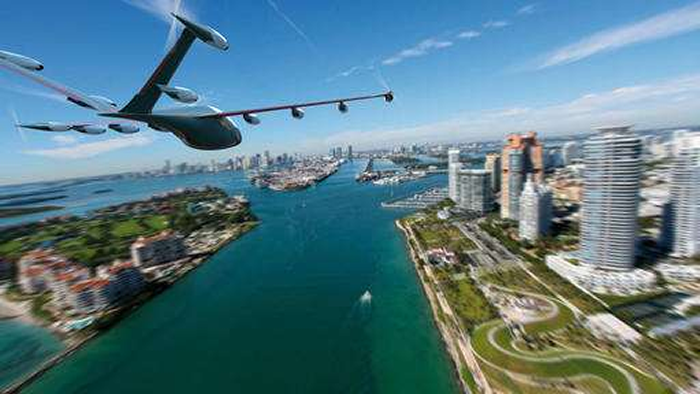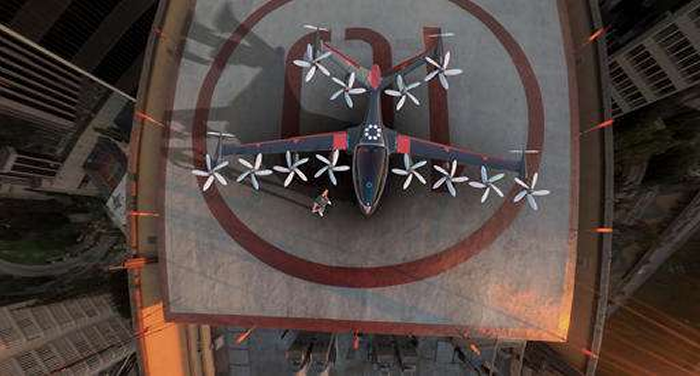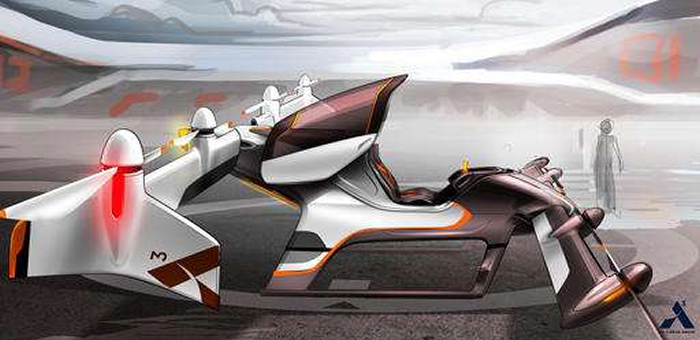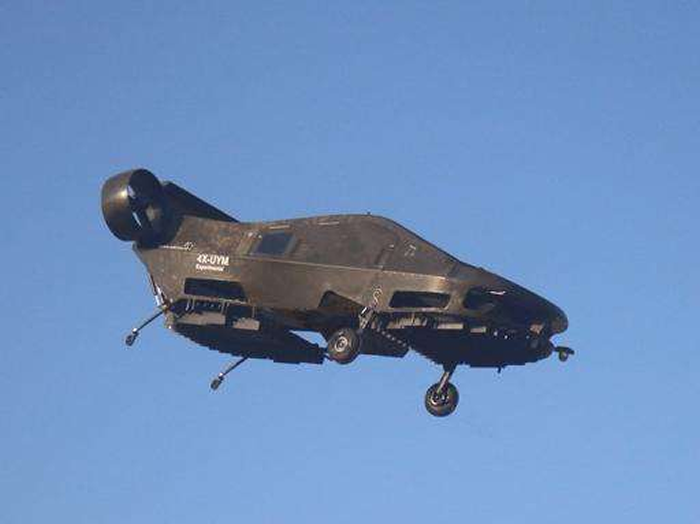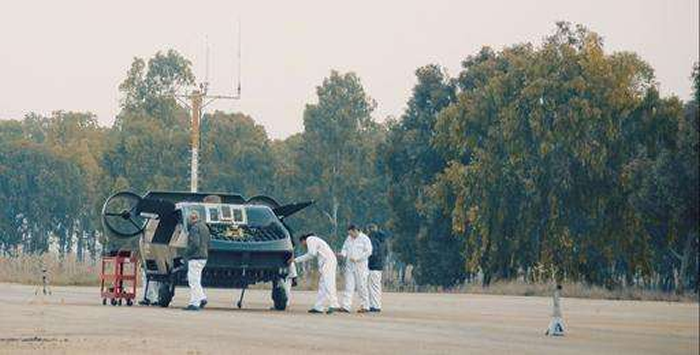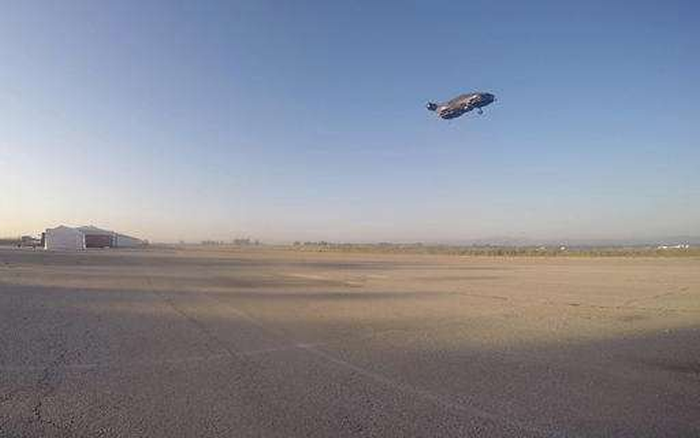Companies race to create the first flying car
Nearly a dozen companies around the globe, including some with deep pockets such as European aircraft maker Airbus, are competing to be the first to develop a new kind of aircraft that will enable commuters to glide above crowded roadways.
A few of the aircraft under development are cars with wings that unfold for flight, but most aren’t cars at all. Typically they take off and land vertically like helicopters. Rather than a single, large main rotor, they have multiple small rotors. Each rotor is operated by a battery-powered electric motor instead of a conventional aircraft piston engine.
It’s no sure bet that flying-car dreams will turn into reality. There are many obstacles, including convincing regulators that the aircraft are safe, figuring out how to handle thousands of new low-flying aircraft over cities without collisions and developing batteries that will keep them aloft long enough to be useful.
But entrepreneurs are moving forward. They see a vast potential market for “air taxis” and personally owned small aircraft to transport people from the fringes of metropolitan areas to city centers as urban areas grow more congested and people spend more time stuck in traffic. They envision tens of thousands of one or two-person flying taxis delivering passengers to the rooftops of office buildings in city centers and other landing pads during rush hours.
“In as little as 10 years, products could be on the market that revolutionize urban travel for millions of people,” said Zach Lovering, the leader of Airbus’ project to develop an autonomous flying taxi called the Vahana. The name means the mount or vehicle of a Hindu deity.
Uber released a 98-page report in October making the business case for air taxis, which the company sees as the future of on-demand transportation. Uber doesn’t have any plans to develop a flying car itself, but the online transportation network is advising several companies that have aircraft in the works.
“The role we want to play is as a catalyst for the entire industry,” said Nikhil Goel, an Uber project manager for advanced programs. Some of the aircraft are drones that will be preprogrammed for each flight and monitored or operated from the ground or a command center. Others are designed for human pilots.
It’s unclear yet how much the aircraft will cost, although prices are likely to vary significantly. Some of the aircraft are designed to be individually owned, while others are envisioned more for commercial use. Designers hope that if demand is high, prices can be kept affordable through economies of mass production.
Several recent developments could make these aircraft possible. Advances in computing power mean the rotors on multi-copter drones can be adjusted many times per second, making the aircraft easy to control. Drones have also benefited from advances in battery and electric motor technology. Some companies, like Chinese dronemaker EHang, are scaling-up drones so that they can carry people.
Another aircraft under development, Santa Cruz, California-based Joby Aviation’s S2, looks more like a conventional plane except that there are 12 tiltrotors spread along the wings and tail. And some, like the Vahana, a cockpit mounted on a sled and flanked by propellers in front and back, don’t really look like any aircraft in the skies today.
“In terms of what you can make fly in a reliable manner, the solution speed gateway that (computer) chips have gone through recently have literally opened the door to a whole new world of flying machine possibilities,” said Charles Eastlake, an Embry-Riddle Aeronautical University professor emeritus of aerospace engineering.
But he also cautioned: “My best engineering guess is that people actually using autonomous air taxis in the next 10 or 15 years is possible, but definitely not certain. The challenges are big.”
Key for many of the designs will be the development of longer-lasting lightweight batteries. Currently available batteries could probably keep an air taxi aloft about 15 to 30 minutes before it would have to land, experts said. Depending on how fast the aircraft flies, that probably isn’t quite enough to transport passengers between nearby cities or across metropolitan areas, experts said.
Another hurdle will be winning Federal Aviation Administration certification for any radical new kind of aircraft when approval of even small changes in aviation technology can take years.
The FAA said in a statement that it is taking a “flexible, open-minded, and risk-based approach” to flying cars. FAA officials have discussed with several manufacturers the certification of aircraft that will be flown with a pilot in the beginning, and later converted to an autonomous passenger aircraft.
While further research is needed to ensure that autonomous aircraft are safe, “we believe automation technology already being prototyped in low-risk unmanned aircraft missions, when fully mature, could have a positive effect” on aviation safety,” the agency said.
Reducing noise is another challenge since air taxis will be taking off and landing in densely populated areas. So is creating enough landing pads to handle lots of aircraft at the same time. A new air traffic control system would also likely be needed.
“It’s pretty clear that the existing air traffic control system won’t scale to the kind of density at low altitudes that people are talking about,” said John Hansman, a Massachusetts Institute of Technology professor who chairs the FAA’s research and engineering advisory committee.
NASA is developing an air traffic control system for small drones that perhaps could be expanded to include flying cars.
“There’s no question we can build the vehicle,” Hansman said. “The big challenge is whether we can build a vehicle that would be allowed to operate in the places where people want to use it.”
Flying cars under development vary significantly
Spurred by technology advances and demand for transportation alternatives in increasingly congested cities, entrepreneurs around the globe are vying to become the first to develop a commercially viable “flying car.” The designs vary greatly, and most aren’t actually cars capable of driving on roads. Here are some examples:
Vahana
European aircraft manufacturer Airbus is working at its Silicon Valley research center on a driverless flying taxi that at first will have a pilot, but will later be autonomous. The vertical takeoff-landing, all-electric aircraft is a cockpit mounted on a sled and flanked by propellers in front and back. Airbus plans to test a prototype before the end of 2017, and to have the first Vahanas ready for production by 2020.
Cormorant
Israeli tech firm Urban Aeronautics originally designed its people-carrying drone as an “air mule” for military use. It takes off vertically and has a standard helicopter engine, but no large main rotor. Its lift comes from two fans buried inside the fuselage. Two smaller ducted “fans” mounted in the rear provide forward movement. It can fly between buildings and below power lines, attain speeds up to 115 mph, stay aloft for an hour and carry up to 1,100 pounds
Lilium Jet
German technology company Lilium Aviation is working on a two-seater aircraft that will take off vertically using 36 electric fan engines arrayed along its wings. The aircraft will hover and climb until the fans are turned backward slowly. After that, it flies forward like a plane using electric jet engines. The company has been flight-testing small scale models. The aircraft will have an estimated cruising speed of up to 190 mph and a range of 190 miles.
AeroMobil 3.0
The Slovakian company AeroMobil has developed a car with wings that unfold for flight. It uses regular gasoline and fits into standard parking spaces. It can also take off from airports or “any grass strip or paved surface just a few hundred meters long,” according to the company’s website. Driver and pilot licenses will be required.
EHang 184
Chinese drone maker EHang has been flight-testing a person-carrying drone in Nevada. The vehicle is a cockpit with four arms equipped with rotors. Takeoff and landing targets are pre-programmed. A command station in China will be able to monitor and control the aircraft anywhere in the world, company officials say.
S2
Joby Aviation of Santa Cruz, California is developing a two-seat, all-electric plane with 12 tilt rotors arrayed along its wings and tail. The aircraft takes off and lands vertically and can achieve speeds up to 200 mph, according to the company’s website.
Transition/TF-X
Terrafugia, based in Woburn, Massachusetts, began working a decade ago on a car folding wings that can fly or be driven on roads that’s called the Transition. The company says it plans to begin production of the Transition in 2019. Terrafugia is also working on a ‘flying car’ called the TF-X—a car with folding arms and rotors for vertical takeoff and landing.
Volocopter
This two-seater, electric multicopter from German company e-volo has 18-rotors and looks like a cross between a helicopter and a drone. It is controlled from the ground, eliminating the need for a pilot license.
Zee
This Mountain View, California, aircraft developer bankrolled by Google co-founder Larry Page says on its webpage that it is working on a “revolutionary new form of transportation” at the “intersection of aerodynamics, advanced manufacturing and electric propulsion.” Company officials declined to provide details about Zee’s projects.
More information: Phys.org

